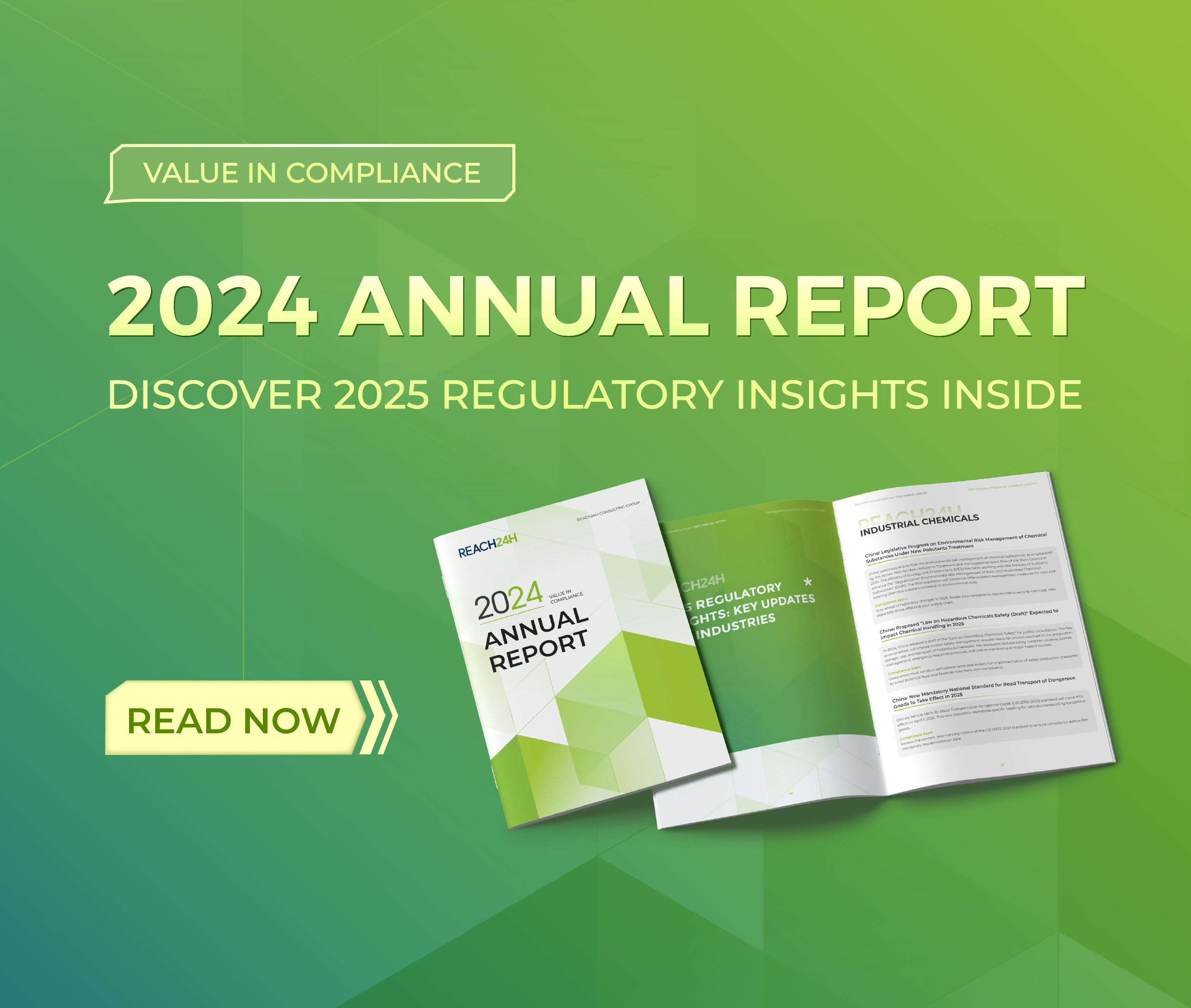India Expects REACH-like Regulation on Chemical Management
Mr. Shisher Kumra, representing Global Product Compliance Group, introduced the fifth and latest draft of India’s upcoming Chemicals Management and Safety Rules (CMS Rules) at the CRAC-HCF 2020 Virtual Forum held by REACH24H on November 25, 2020. This draft regulation adopts several of the same principles and concepts of EU REACH and thus has been dubbed as India REACH. Mr. Kumra assumed that the CMS Rules will be finalized soon and come into force early 2021.Drafting the new CMS rules has taken years as the intention is for it to manage chemicals overall. It will supersede the existing rules on hazardous chemicals and cover issues regarding notification, registration, restriction and prohibition, labelling and packaging requirements of chemicals, as well as extended requirements for hazardous chemicals in terms of storage, transport, emergency response, safety audit, etc.
Updates
There are some well-received updates shared by Mr. Kumra that there will be an authority called the Indian National Chemical Authority (INCA), serving like the European Chemicals Agency (ECHA) to govern all activities relating to notification and registration. Not only foreign manufacturers but also traders can appoint an Authorized Representative (AR, similar to an Only Representative under EU REACH) based in India to fulfil the obligations. If a priority substance has been registered under other regulations in India, chemical registration will not be required under the CMS Rules. The draft allows companies to submit data from international sources and emphasizes the principle that existing test data must be considered as a priority and animal testing should be a last resort. Notable amendments in the draft have been summarized by ChemLinked (read more).
Chemical List Management
To explain the categories and number of substances that will be managed under the CMS Rules Mr.Kumra showed the audiences the chart below. As we go up the pyramid there are less substances with higher obligations. All existing substances in quantities above 1 tonne per year require notification during the initial notification period. The India inventory will be created as a result of the initial notification period. According to Mr. Kumra, there will be around 35,000 substances require notification and after that there will be no further compliance requirements for them. Registration is only required for priority substances that are listed in Schedule II (750 substances) if manufactured or imported exceeding 1 tonne per year. Subsequent priority substances subject to registration will be screened out and supplemented into Schedule II. If unacceptable risks are posed to human health and the environment when using the registered substance, the authority may restrict the use of the substance or prohibit it as per Schedule VI. In addition, the substance may be recommended to be added as hazardous substances.

Industry Concerns
The industry representatives are calling for more stakeholders’ involvement. Although the CMS Rules has been drafted for five versions, none of them were published for wider industry consultation, instead only circulated to selected chemical industry bodies in India.
Strong wishes from the industry were voiced to postpone the implementation of the Rules since the enterprises still need time to recover from the impact of COVID-19. In addition, the registration timeline is not provided based on the tonnage band which means all the priority substances listed in Schedule II only have 18 months for registration. It is deemed far from adequate considering the time investment in consortium formation, data gap analysis, data purchasing, cost-sharing, etc.
Intermediates registration is another focus of attention among industry players. According to Mr. Kumra, all intermediates need to be notified. If they are listed as priority substances to be registered, (1) basic registration applies for those below 1,000 t/y, which is similar to EU REACH wherein registrants only provide the physicochemical properties; (2) full registration applies for above 1,000 t/y. This provision has been criticized by several associations and may need further modification.
Many representatives hoped that supporting guidance documents could be available before the CMS Rules comes into force to guide the enterprises to start preparing the obligations, as well as IT tools in place to support the joint registration.
* The materials (video and ppt) of the presentation are available now. You can click here to register our CRAC-HCF Forum and then go to the download section of the Live Conference Hall to get them if there is a need.
Reference Links
[1] India’s upcoming Chemicals Management and Safety Rules (CMS Rules)
[2] India REACH: Fifth Draft of the Chemicals Management and Safety Rules Released


